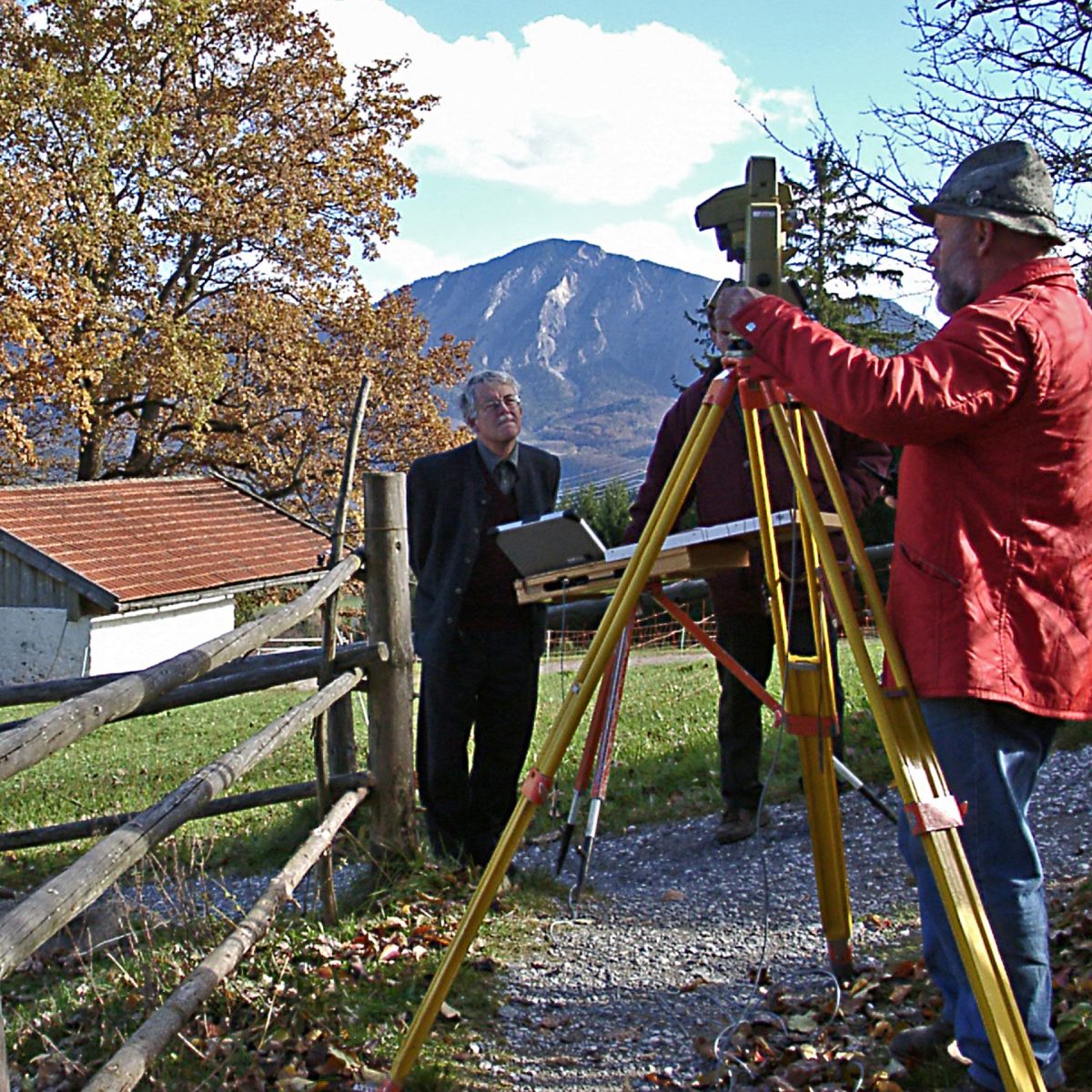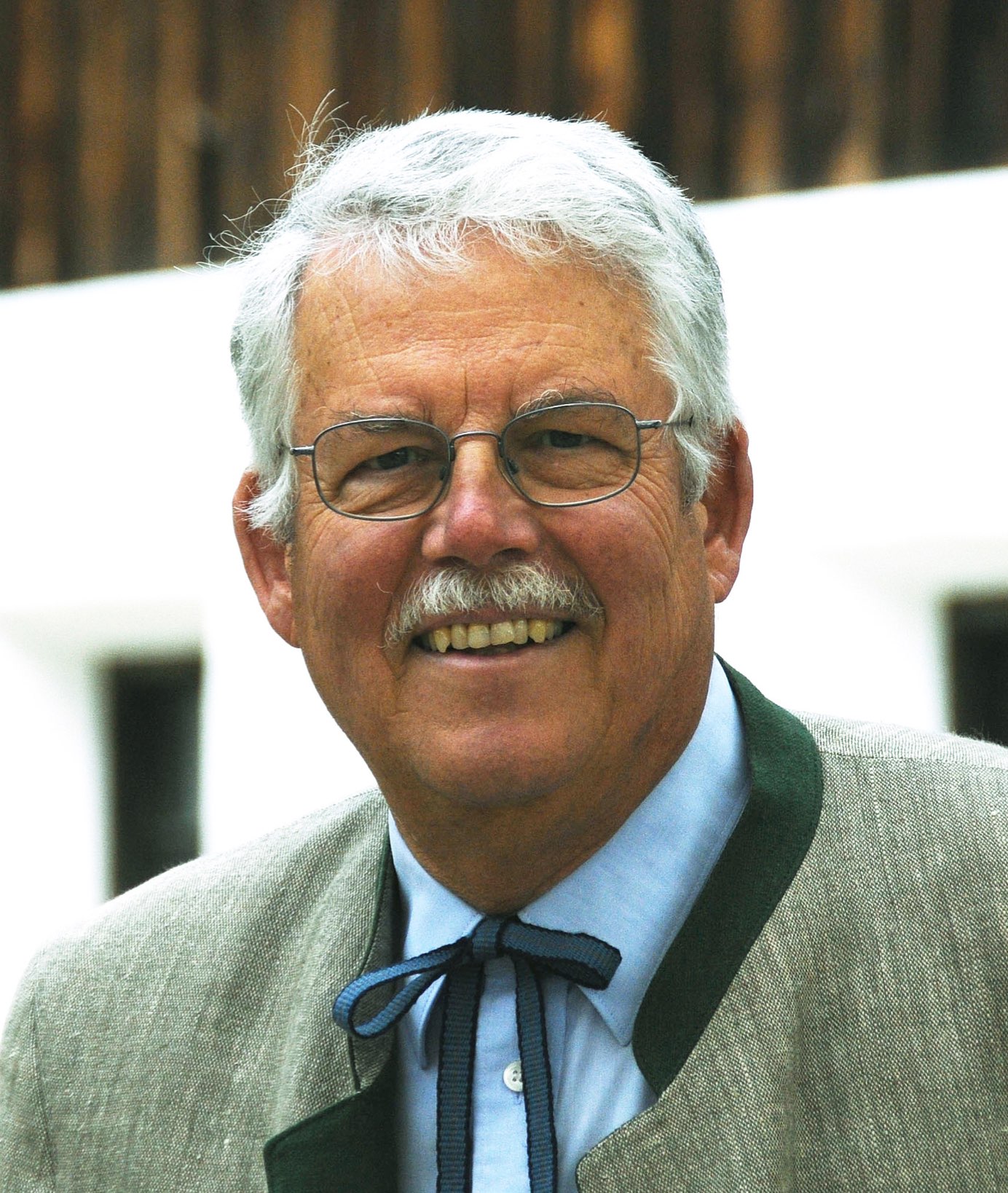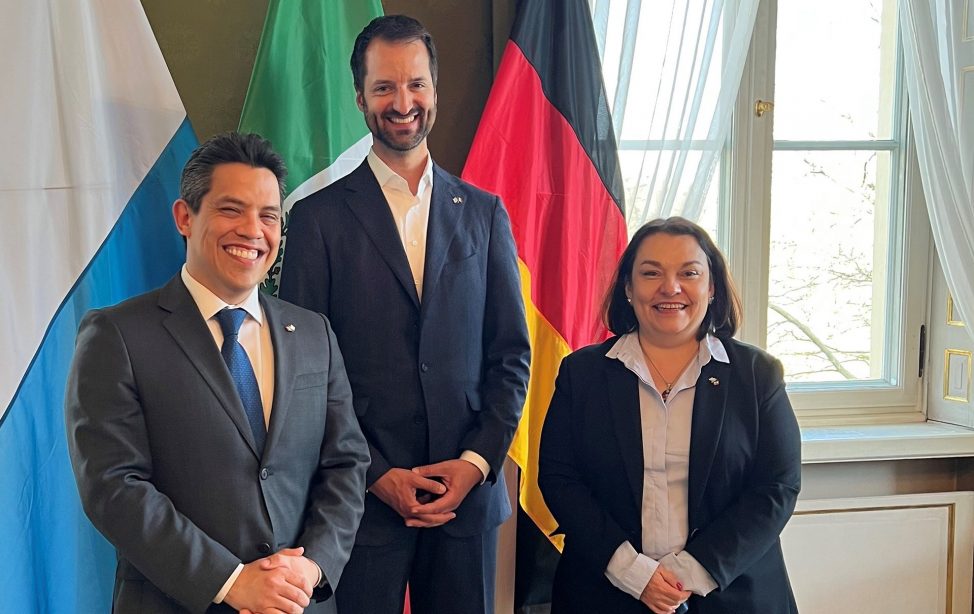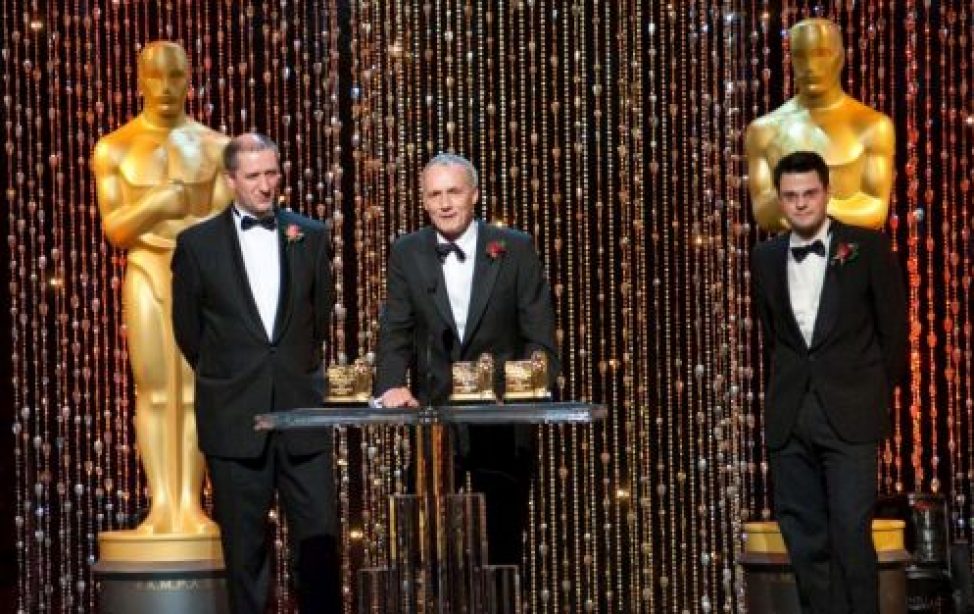
As Director of the Glentleiten open-air museum, Helmut Keim worked hands-on not shying away from any task. The photo shows him during surveying work on the museum grounds (Image: M. Böhm / District of Upper Bavaria, Archive of Glentleiten open-air museum).
In the 1960s this seemingly nostalgic attitude was sneered at on numerous occasions. But through the years the awareness of public and politics also developed towards preserving historical cultural heritage. At that time, Helmut Keim had long since turned his interest, the study of alpine timber structures, into his dissertation at TUM. For eight years he remained at the Chair of Building Construction and Material Science for his doctorate and recalls: “Had I not been an assistant at TUM, I would not have got hooked on building and house research to such an extent and may not have gone in this direction”.
First architect then curator
A little less than three years later it is the founding director of the Open Air Museum Glentleiten who continued to push him into this direction when he advises him to apply for the management position. The recently established museum, which houses historical buildings from rural areas in Upper Bavaria and the corresponding ethnographic objects, is supposed to be further developed under the guidance of building and house researcher Helmut Keim. “I never would have thought that I had a chance”, Helmut Keim remembers, “but being self-employed with a wife and two kids, a secure position as a civil servant was well-timed”. Helmut Keim beat his competition and started as the new director of the museum in 1979. He quickly realized that his 60-hour-week barely left him any time for family. In regard to museological matters he was entirely self-taught, there were barely any models for successful infrastructure in Bavaria and most of all he lacked staff capable of providing expert support in correcting the numerous shortcomings, which resulted from the rapid start-up phase.
Without the time at TUM, i would not have got hooked on building and house research to such an extent.
Collecting, researching, preserving, educating
Under his aegis, crucial structures of the open air museum have been improved or created in the first place – frequently they serve as a model and benchmark for other museums of cultural history: in the beginning Helmut Keim laboriously caught up on the documentation, research, preparation and inventory of the exhibits and raised the related standards. In doing so he furthermore refined the scientific methodology, improved the procedure of translocating buildings and solved fundamental conservation problems through new approaches. And lastly he broke new ground by introducing experimental presentation methods and modern audio-visual strategies of learning. These were received very well by audiences and in professional circles alike.
When reconstructing buildings, what always matters to Helmut Keim are originality and authenticity, truthfulness and accuracy, verifiability and transparency. “Historical accuracy was key for me – and not the contemporary taste.” He wanted to preserve historical testimonies on a high professional level and present them in a way that visitors may understand the documents of architectural and social history while, most importantly, having fun at the same time. Even though they contradicted the previously advised schedules for costs and time, Helmut Keim was able to convince the museum’s bearers of his innovations on numerous occasions.
With satisfaction, yet humbly, Helmut Keim notes that as the biggest open-air museum of southern Bavaria The Glentleiten is among the leading museums of its kind in Europe. Based on visitor numbers it is one of the most successful museums in all of Bavaria. Since 2004 Helmut Keim is retired. “Even though I really enjoyed working there”, he says, “saying goodbye to the museum was very easy for me back then”. However, building and housing research has not entirely ceased to captivate him: as soon as he was retired he revisited the one hundred locations of the archaic earthfast silos and barns in Tyrol recorded in his dissertation and amended the documentation by adding now possible age determinations. In 2011 he was finally able to publish his work. “This kept me rather busy”, Helmut Keim says in hindsight, “but if I hadn’t done it, possibly nobody would have done it and this type of rural peasant building culture simply would have vanished without anyone noticing.”

Dr. Helmut Keim (Image: Freilichtmuseum Glentleiten).
Degree Architecture 1968, Doctorate 1976
In 1968 Helmut Keim earned his diploma in Architecture at TUM. He remained at TUM to do his doctorate at the Chair of Building Construction and Material Science on alpine timber structures at the Faculty for Architecture from 1976 onwards.
Subsequent to working as a lecturer at FH Nürnberg and as a freelance architect, in 1979 Helmut Keim became the director of the Open Air Museum Glentleiten in Upper Bavaria, which he managed for 25 years.
From 1982 on he additionally was the head of Glentleiten’s field office, the East-Upper Bavarian Farm-house Museum Amerang and successfully oversaw its further development, too.
Since 2004 he is enjoying his retirement, likes to go hiking, cycling and skiing and takes care of his large garden.


